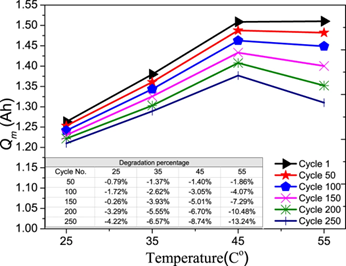Climate change is playing havoc with seasonal patterns and intensity. Extreme weather events have become more frequent and severe. The impact of extreme weather conditions, be it scorching summer or frigid cold can be far and wide. It affects nature and society at large but strangely it also impinges on day to day decisions such as buying a new car technology such as an electric vehicle. In this article we expound on the impact of high temperature on EV batteries and look at what options consumers have.
Impact of high temperature on EV batteries and options for users

This is the second article in a series on the impact of temperature on electric vehicles. Given the delivery waiting time for electric vehicles, you may be expecting to receive your EV in summer or next winter. This series has been developed to help you understand the implications of temperature.
What effects do high temperatures have on EV battery performance?
When an EV battery is exposed to excessive heat, the rate at which chemical reactions take place inside the battery increase. This includes the unwanted chemical reactions resulting in a corresponding loss of battery life. When an EV is charged under high temperature conditions, the increased operating temperature of batteries above the optimal accelerates the aging process and can lead to the degradation of batteries.
Moreover, at higher ambient temperatures, there is an increased demand from the battery’s thermal management system which consumes energy and reduces range. In addition, the use of air conditioning in summer months is yet another energy guzzler, thereby negatively impacting vehicular range. These are valid concerns which are major hurdles in increasing the EV uptake in many regions.
This chart from a scientific study shows increasing degradation rate of maximum charge storage capacity of a lithium-ion battery during cycling with increasing temperatures.
source: https://www.nature.com/articles/srep12967
A battery thermal management system (BTMS) is utilized in EVs and HEVs to maintain batteries in the optimal temperature range and balance the temperature differences among the cells. However, summer over the last few years in many parts of the world has been witness to record temperatures leading to forest fires in some parts of the world and intense droughts in others. Given that this level of heat can age batteries faster than usual, consumer guidance on how to keep EVs running in the summer sun provided much needed advice to boost EV range in hot weather.
Options for consumers:
Simple things such as parking and charging your car under shade so as to avoid running the air conditioner at its maximum; keeping the vehicle charged at mid-range 60-70% for greatest efficiency; taking the heavy items out of the car when not needed which can reduce the unnecessary drag and keep the battery efficient are just some of the tips that can come handy.
If you are on a hot summer road trip and need to charge your car, allow your vehicle to cool down before plugging it in or consider using a less powerful charger.
Moreover, concerns around EV range in hot weather can be precluded by opting for EVs that meet the travel range requirement such as those powered by high nickel containing batteries. Scientific studies have shown that NMC532 batteries, have an energy density that exceeds that of the LFP cells and a cycle-life that greatly exceeds that of the LFP cells at 40 °C, 55 °C and 70 °C. [i]
Factoring extreme weather conditions might seem odd when considering choice of a drivetrain, especially when it comes to new technology such as an electric vehicle. However, an informed choice in this matter can go a long way. Knowledge of what goes inside a battery when it gets too hot or too cold outside may help consumers save money on features they won’t use or adding features that can bring serious benefits.
[i] https://iopscience.iop.org/article/10.1149/1945-7111/ac67b5



